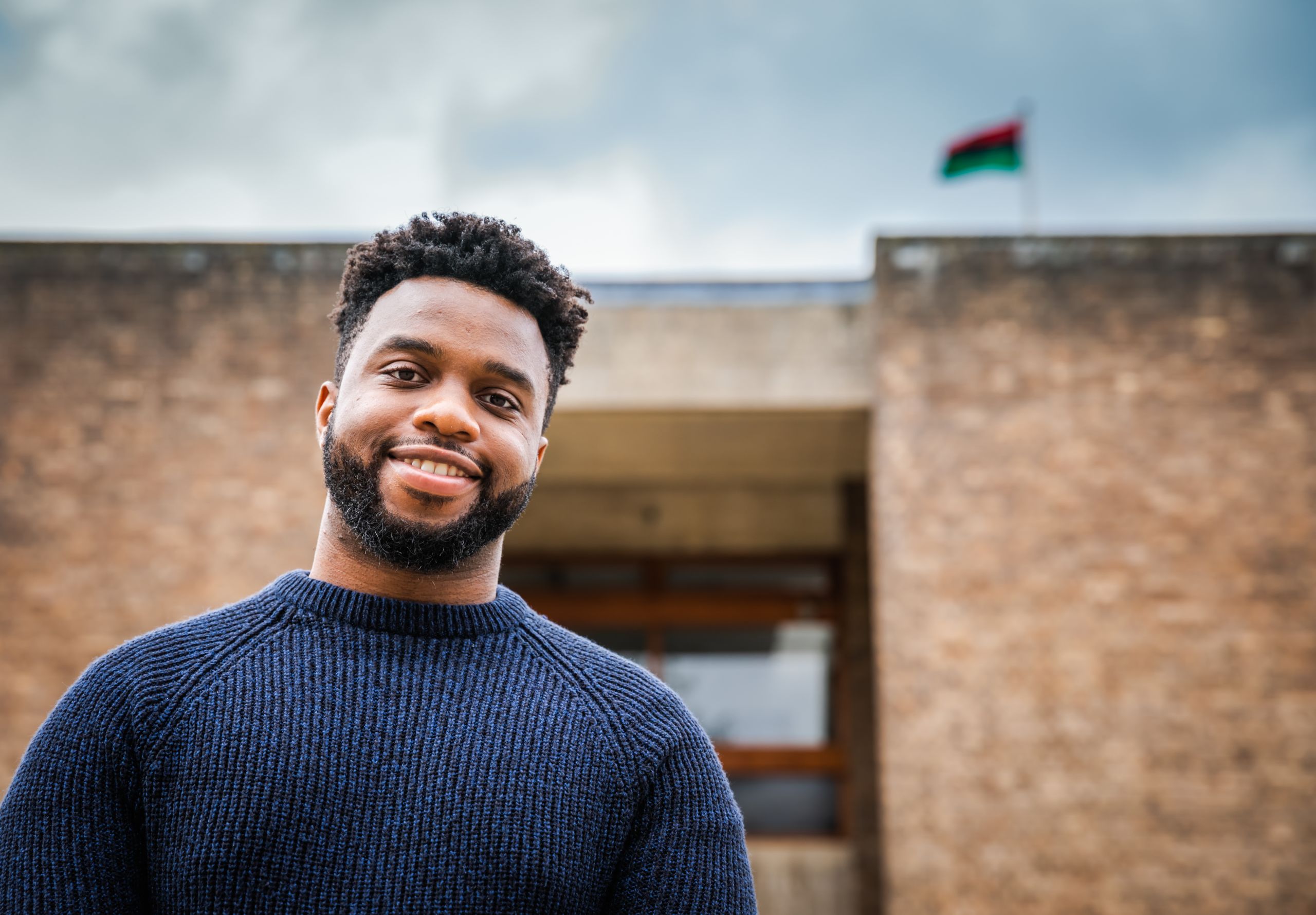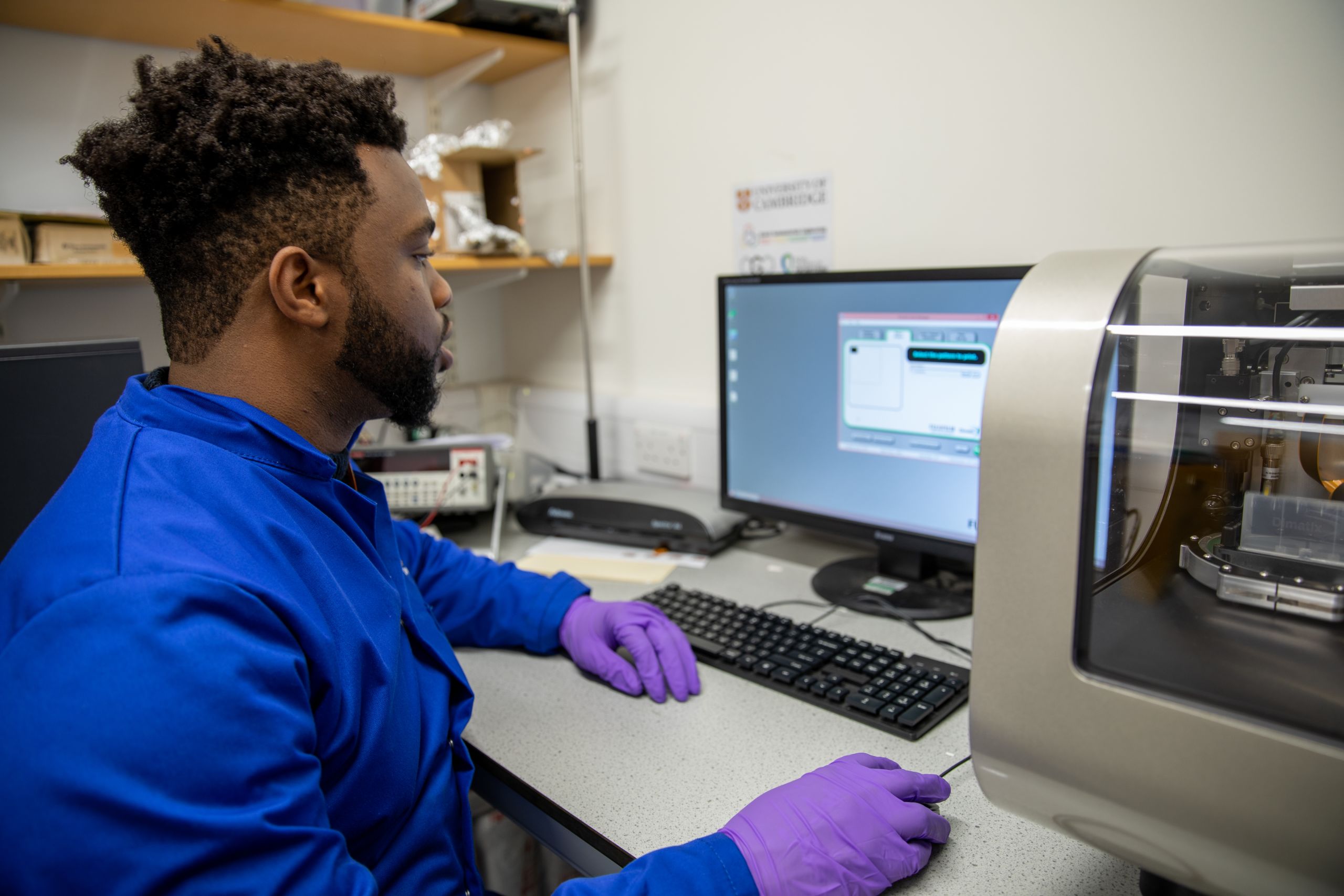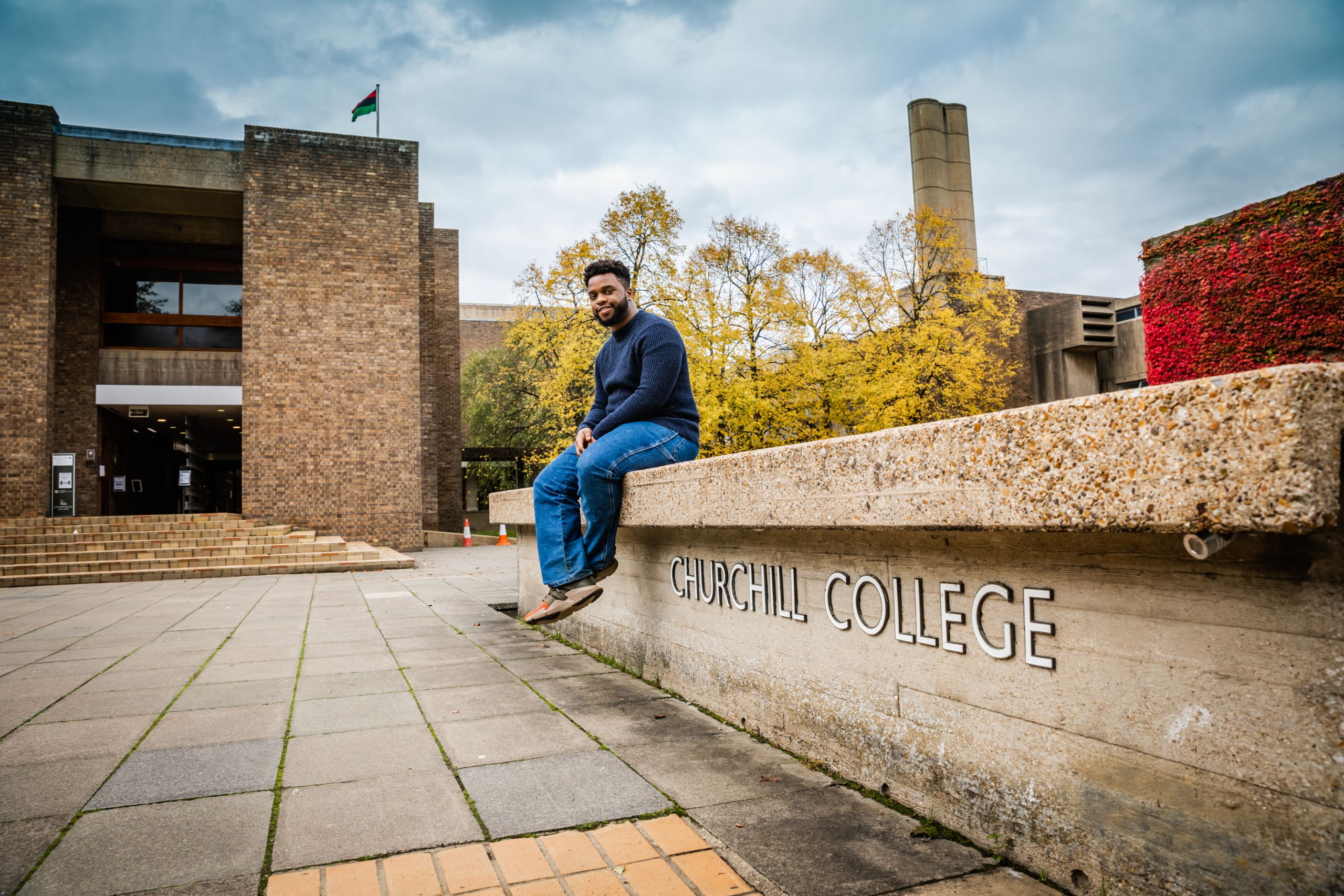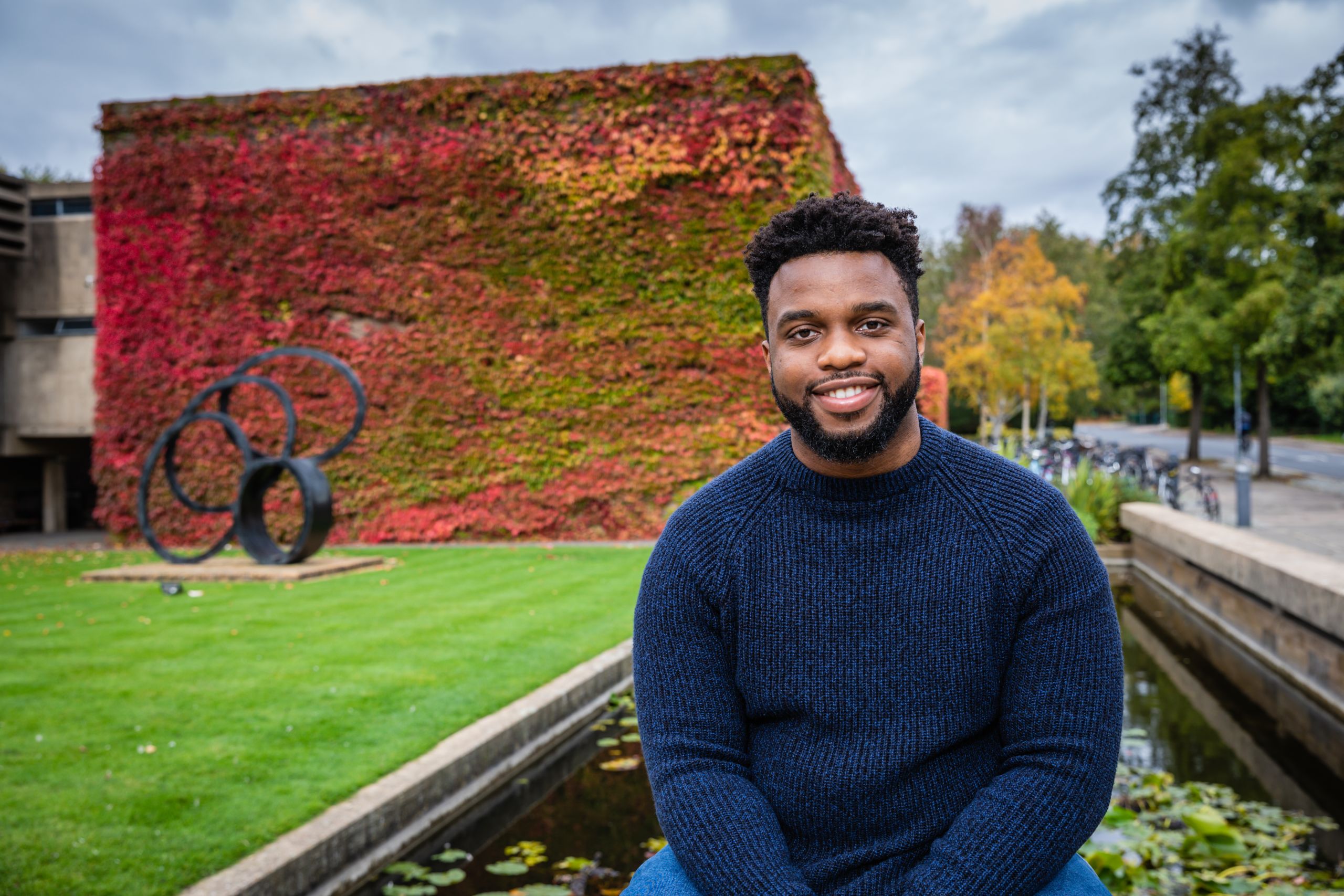This Cambridge Life
The scientist who launched a comic and flew the flag for Black History Month

Self-confessed comic addict Osarenkhoe Ogbeide sees beyond the superhero to the scientist. When he’s not developing printable gas sensors, he’s passionate about celebrating the contributions of black scientists throughout history.
Marvel films and comics sparked my interest in science subjects. I realised that lots of the best superheroes had a background in science – Ironman was a genius engineer and Spiderman studied as a biochemist – and they would often use this knowledge to solve problems.
Today I’m a PhD student at the Cambridge Graphene Centre, working on developing the next generation of gas sensors using 2D materials, such as graphene. The real-life applications of the technology include monitoring CO2 in the home and ammonia in industrial settings, but it also has the potential to be used as a medical diagnostic tool. Last year our group published a paper that explored using gas sensors for personal healthcare monitoring. I helped to develop a tiny sensor to test for ammonia gas concentrations in exhaled breath, as it is an indicator of kidney or bowel disease.

Osarenkhoe working at the Cambridge Graphene Centre
Osarenkhoe working at the Cambridge Graphene Centre
While I’ve been in Cambridge I’ve also been involved in an inspiring initiative called Africans in STEM, which promotes and celebrates the contributions of black individuals to science, technology, engineering and medicine. Greater visibility gives black researchers a chance to network and share ideas, but equally as important, it means that a career in STEM feels more attainable for other young people of African descent.
Many people are unaware of the contributions to society of black scientists and engineers throughout history. For example, did you know that a technology you hold in your hand every day, GPS, was developed from the mathematical modelling of the Earth, programmed by Gladys West?
I would like to see a world where young black students who want to pursue a career in STEM or academia are empowered in the mindset to know they can. I want them to have a free choice in what career path they choose – rather than thinking that people like them don’t do STEM.

I suggested flying the pan-African flag to mark Black History Month as a prominent reminder of my college’s pledge to tackle racism. To my knowledge, up until this month, the pan-African flag has never been flown by a Cambridge College. The flag was designed by Marcus Garvey, who is regarded as one of the greatest black leaders, and it represents unity of African nations and celebrates African people.
My initial reaction on the day the flag was raised by Churchill College was relief – that it was sunny, and we had just the right amount of breeze! But on a more serious note, seeing the flag flying made me feel really welcomed and gave me a sense of pride. It felt like a really significant moment in time.
My love of comics has continued to this day, and during lockdown I launched my own business, New Africa Comics, based on African mythology, culture and people. Working with a writer and an artist, we have now launched the first comic, Shango. It’s been fascinating looking into mythology from both my own ancestry and other ancestries. There is such a rich culture and a wealth of stories that have never been told in this way before.
The comics also serve a deeper purpose – my aim is for them to be a vehicle for tackling tough social-political issues that affect our community, from government corruption on the African continent to colourism – all while entertaining the reader with amazing art and commentary of course!
The success of the film Black Panther shows that there is a real desire to see more narratives that represent African people and celebrate African culture. From a business perspective New Africa Comics taps into that gap in the market. I hope in time it will become for Africa what Marvel and DC are for America.
Alongside developing New Africa Comics, I am looking to stay in academia and one day hope to start my own world-leading lab in Nigeria or another African nation. I’d love to set up a lab which is like SpaceX or Tesla, where I can push the industry forward while creating usable products, and at the same time bring an African nation to the forefront of research.

This profile is part of our This Cambridge Life series, which opens a window on to the people that make Cambridge University unique. Cooks, gardeners, students, archivists, professors, alumni: all have a story to share.
Words: Charis Goodyear. Photography: Lloyd Mann

